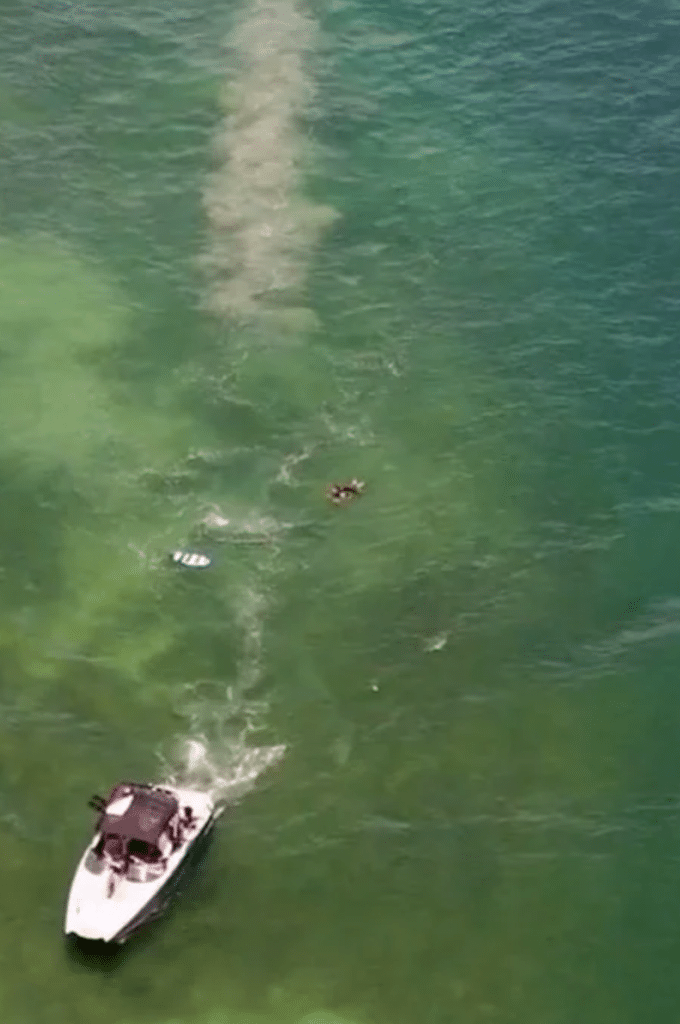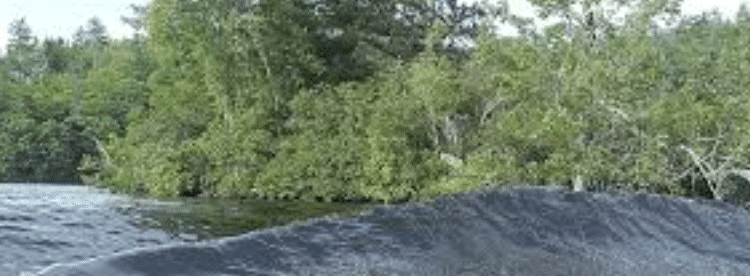Wake Boats: The Beautiful Menace Beneath the Surface
By Staff Writer David R, Grab your goggles—it’s time to explore the hidden world of Wakeboats and the lake you love.
The Mirage of Wake Boat Bliss
They slice through the water like luxury missiles—sleek, powerful, and engineered for fun. Wake boats promise the thrill of surfing without the ocean, turning placid lakes into adrenaline playgrounds. With their glossy brochures, influencer reels, and booming accessory markets, they’ve become the crown jewels of inland recreation. But beneath the surface—literally and figuratively—lurks a murkier truth: these aquatic beasts may be the most ecologically misleading machines on the water.
Wake boats aren’t just recreational vessels. They’re engineered to manipulate physics, reshape shorelines, and—intentionally or not—wreak havoc on fragile ecosystems. And while their rise has been meteoric, their environmental footprint is anything but invisible.
The Engineering of Impact
Ballast and Downdraft
At the heart of every wake boat is a simple but powerful concept: bigger waves require deeper displacement. To achieve this, wake boats use ballast tanks—massive compartments filled with water to weigh the boat down. This intentional submersion increases the boat’s draft, allowing it to carve out towering wakes ideal for surfing.
But this deeper draft comes at a cost. As the hull sinks lower, it churns up sediment from the lakebed, releasing nutrients and pollutants that had settled over decades. This sediment cloud can trigger algae blooms, reduce water clarity, and disrupt the delicate balance of aquatic ecosystems. In lakes with shallow basins or sensitive bottom habitats, the impact is immediate and severe.

Exhaust Systems
Many wake boats also employ downdraft exhaust systems, which route engine emissions directly into the water column. While this design reduces noise and keeps fumes away from passengers, it introduces hydrocarbons and other pollutants into the aquatic environment. These emissions can lower oxygen levels, stress fish populations, and contribute to long-term water quality degradation.
Wave Formation Physics
The engineered wakes mimic ocean surf—ideal for riders, disastrous for lakes. Unlike natural wave patterns, wake boat waves are high-energy and repetitive, often hitting the same shoreline zones over and over. In confined freshwater environments, this artificial surf amplifies shoreline erosion, destabilizes tree roots, and disturbs nesting habitats for birds and amphibians.
Shoreline Erosion and Habitat Disruption
Wave Energy Transfer
Traditional boats create wakes that dissipate quickly. Wake boats, by contrast, are designed to produce sustained, high-energy waves that travel long distances. When these waves crash into shorelines, they erode soil, undercut embankments, and dislodge vegetation. Over time, this leads to collapsing shorelines, increased turbidity, and the loss of natural buffers that protect against flooding and nutrient runoff.

In lakes with sandy or clay-based shores, the damage is especially pronounced. Tree roots become exposed, docks are destabilized, and entire sections of shoreline can vanish within a single season of heavy wake boat traffic.
Wildlife Impact
The ecological toll extends beyond erosion. Nesting birds—such as loons, herons, and grebes—often build their nests close to the waterline. Repeated wave action can flood these nests, destroy eggs, and force birds to abandon breeding sites. Amphibians and fish are similarly affected. Wake turbulence can disrupt spawning beds, displace larvae, and reduce survival rates for young aquatic life.
In some lakes, conservationists have documented declines in native fish populations directly correlated with increased wake boat activity. The combination of sediment disturbance, oxygen depletion, and habitat destruction creates a hostile environment for species that once thrived.
Property Damage
Homeowners along popular wake surfing lakes report a growing list of grievances: cracked foundations, flooded yards, damaged docks, and collapsing embankments. Insurance claims have risen, and some communities have begun lobbying for stricter regulations or outright bans on wake boats.
The irony? Many of these properties were once marketed as serene waterfront retreats. Now, they’re battlegrounds between recreation and preservation.
The Illusion of Regulation
Distance Guidelines
Most states recommend that wake boats operate at least 200 feet from shore. But enforcement is rare, and many lakes are too small to accommodate such distances. In practice, wake boats often cruise within 100 feet—or less—of shorelines, amplifying their impact.
Even when boaters follow the rules, the physics of wave propagation means that wakes still reach the shore with force. Unlike traditional wakes, which dissipate quickly, wake boat waves retain energy over longer distances, making even “compliant” operation potentially harmful.
Depth Requirements
Experts suggest that wake boats operate in water at least 15 feet deep to minimize bottom disturbance. Yet many lakes popular with wake surfers have shallow zones, especially near shore. When wake boats cruise through these areas, their ballast-enhanced hulls stir up sediment, release nutrients, and degrade water quality.

Some manufacturers have begun promoting depth sensors and GPS-based “safe zones,” but adoption remains limited. And without enforcement, these recommendations are little more than suggestions.
Industry Pushback
Wake boat manufacturers are not blind to the criticism. In recent years, they’ve introduced eco-friendly innovations: hybrid engines, low-emission exhausts, and “eco modes” that reduce wake size. But critics argue these are band-aids on a bullet wound.
The core design of wake boats—ballast-heavy, wave-generating, and high-powered—is inherently disruptive. Until the industry rethinks its priorities, these innovations may serve more as marketing tools than meaningful solutions.
Social Divide on the Water
Recreation vs. Preservation
Wake boat enthusiasts argue for their right to enjoy public waters. They see wake surfing as a legitimate, exhilarating sport that brings families together and boosts local economies. Conservationists, meanwhile, point to the irreversible damage being done to ecosystems, shorelines, and community cohesion.
This tension plays out in town halls, lake associations, and online forums. Some communities have enacted wake boat bans or restricted hours of operation. Others remain locked in debate, torn between economic interests and environmental stewardship.
Lake Culture Tensions
Longtime residents and casual paddlers increasingly clash with wake surfers over noise, safety, and environmental degradation. Canoeists and kayakers report near-misses with towering wakes. Anglers complain of fish displacement. Families lament the loss of quiet afternoons on the water.
In some lakes, the cultural divide has become so pronounced that residents have begun organizing “quiet zones” or “no wake days” to reclaim a sense of peace. But enforcement is tricky, and tensions continue to simmer.
Economic Influence
Wake boats are big business. Dealerships, tourism boards, and accessory markets all profit from their popularity. This economic influence creates resistance to tighter regulations. Local governments, wary of alienating boaters or losing revenue, often hesitate to act.
Some lakes have seen a boom in wake boat-related tourism—bringing in money, but also accelerating environmental decline. The question becomes: how much economic gain is worth the ecological cost?
Misleading by Design

Marketing vs. Reality
Manufacturers emphasize lifestyle, not impact. They sell an experience, not a consequence. And for many consumers, the environmental toll remains invisible until it’s too late.
Wake boat ads show carefree families surfing glassy lakes, laughing under blue skies. They don’t show the turbidity, algae blooms, or collapsing shorelines. The disconnect between marketing and reality is stark—and intentional.
The “Greenwashing” of Wake Boats
Some brands tout hybrid engines, biodegradable surf ropes, or “eco modes.” But these features often coexist with ballast-heavy wave creation and high-horsepower engines. The result is a paradox: boats that claim sustainability while actively undermining it.
This greenwashing mirrors tactics seen in other industries—where superficial fixes mask deeper problems. Until wake boat design prioritizes ecological harmony over wave size, these claims remain dubious at best.
Public Perception
Many lake-goers are unaware of the environmental toll. They see sleek boats, happy riders, and assume minimal impact. The aesthetics and adrenaline lull them into complacency.
Education is key. Lake associations, conservation groups, and concerned residents must work to raise awareness, challenge assumptions, and promote responsible recreation. Without a shift in public perception, meaningful change will remain elusive.
Responsible Operation
Wake boats are not inherently evil—but their use demands responsibility. Operating in deep water, far from shore, with strict adherence to guidelines can mitigate much of the damage. Boaters must be educated, incentivized, and held accountable.
Some communities have begun implementing wake boat zones, depth-based restrictions, and mandatory training. These efforts show promise—but require buy-in from boaters, manufacturers, and regulators alike.
Technological Innovation
The industry has the capacity to innovate. Imagine wake boats with dynamic ballast systems that adjust based on depth and proximity to shore. Or GPS-linked controls that limit wake size in sensitive zones. These technologies exist—they just need to be prioritized.
Manufacturers must move beyond aesthetics and embrace ecological design. The future of wake boating depends not on bigger waves, but smarter engineering.
Policy and Enforcement
Regulation is essential. States and municipalities must establish clear guidelines, enforce distance and depth requirements, and penalize violations. Without enforcement, even the best policies are toothless.
Funding for enforcement, education, and ecological monitoring must be part of the conversation. Wake boats are not just recreational tools—they’re environmental actors. And they must be treated as such.
Surfing Toward Accountability
Wake boats are icons of modern lake recreation—beautiful, thrilling, and undeniably disruptive. Their rise reflects our cultural appetite for adrenaline, aesthetics, and engineered experiences. We want to hear from YOU, join us here at Misleading and hear what others are thinking.





